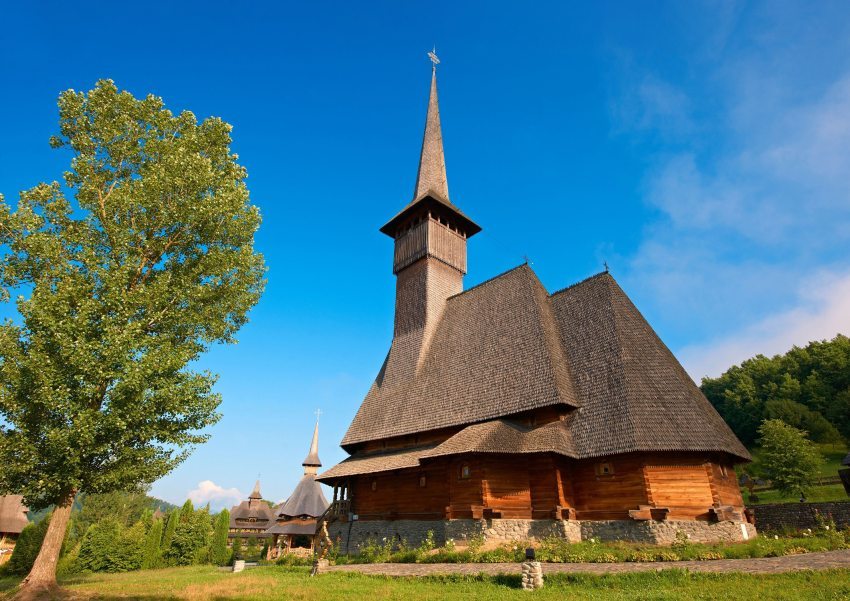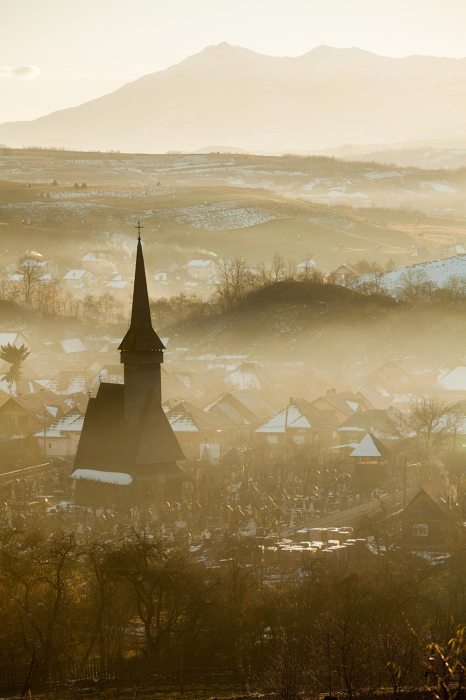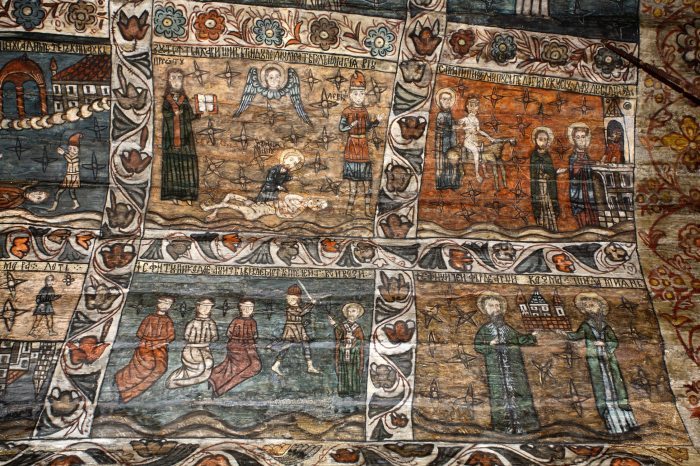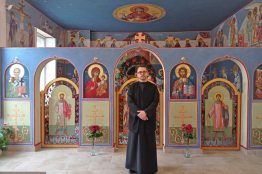Sky-high wooden towers – unique contributions of Máramaros to the World Heritage
Some very unique buildings were added to the UNESCO World Heritage List in 1999. Out of the nearly 100 typical wooden churches in Máramaros (Maramures) region in Romania, eight have been selected as the most authentic examples of the region's church and folk architecture of the 17th and 19th centuries. The Orthodox and Greek Catholic churches, with their high towers and unique wall paintings, offer an exciting experience for both hikers and art lovers.

From woodcarving to church architecture
The historical region of Máramaros (Maramures) is a part of present-day Romania (Partium) and Ukraine ( Transcarpathia), named after the river Mara that flows through the region. Three-quarters of its territory is made up of mountain forests and pastures, and its most significant building material is wood, which has become important not only in everyday life but also in religious architecture. So it is not surprising that the tradition of building wooden churches dates back to the 16th century.
The tradition of carpentry and woodcarving is still preserved today, and carving motifs such as the sun, moon, stars, or the cord are still found in churches.
The Land of Wood churches
More than three hundred Orthodox and Greek Catholic wooden churches once dotted the Maramures countryside, but only ninety-three remain today. Eight of the listed buildings were declared World Heritage sites in 1999, thus making immortal the monuments of ecclesiastical and vernacular wooden architecture. The churches were typically built between the 17th and 19th centuries, mainly of oak and pine, and even the nails were made of wood, for lack of metal.
Eight wood churches in Máramaros on the World Heritage List
Wood Church of the Presentation of the Virgin in the Temple, Barcánfalva (Bârsana)
Wood Church of Saint Nicholas, Budfalva (Budesti)
Wood Church of the Holy Piroska, Desze (Desesti)
Wood Church of the Holy Archangels, Dióshalom (Șurdești)
Wood Church of Nativity of the Virgin, Jód (Ieud)
Wood Church of Saint Michael and Gabriel, Nyárfás (Plopiș)
Wood Church of Saint Michael and Gabriel, Rogoz (Rogoz)
Wood Church of the Holy Piroska, Sajómező (Poienile Izei)
The timber-framed churches with their tall, thin bell towers and shingle-covered roofs bear the hallmarks of Mountain architecture, but they also show a synthesis of East and West: the Byzantine-style floor plan of the churches is matched by a Gothic form. This particular architectural solution is not the only reason for the World Heritage designation: the paintings on the church interiors are also of particular value.
Without perspective
"The inside of the church is stunning, with no perspective anywhere. The 18th-century painters of Máramaros did not really use perspective very much, instead they used the 2-dimensional drawing method that was known and widespread before the Renaissance. This means that these painted figures do not have a three-dimensional body, but only an outline and the elements of the scenes that should have been represented behind each other are here more than once on top of each other,' states an article in the Korunk Magazine No. 2022/4 about the Orthodox Church of St. Piroska in Desze (Desesti), built in 1770, but the statement is true for all wooden churches in Máramaros region.
The colourful 1780s paintings of the building in Desze, framed with flowers by the painter Radu Munteanu, were discovered in the 1990s under a thick layer of soot on the wall.
Toader Hodor and Ion Plohod painted the Baroque-style murals of the Church of the Presentation of the Virgin in the Temple in Barcánfalva (Bârsana), which made the building a World Heritage Site.
The wooden church, built in 1720, has had an adventurous fate, having been moved from its original site to the Iza River valley in 1739 and back sixty years later.
The numbered wooden beams used for the rebuilding are a testament to this. The church was completely renovated in the early 1990s, when the village's new Orthodox religious centre, a monastery and a church were built, with a 62-metre-high wooden tower, now the second tallest in Europe.
The oldest ones
"The wooden church of Jód (Ieud), however, is a well-established, thousand-arched wonder, a visible symbol of the people's building spirit. Besides the rough, hard work of the earth and the forest, at least the little thing of beauty in the form of the house of the Lord shall be given to the earthly eye." – this is what in the 1990 issue of Harghita Népe, Zoltán Czegő wrote about the church of the Nativity of the Virgin, which according to some sources was already standing in the 14th century. However, recent research suggests that it was built in the 1610s, making it one of the oldest churches in Máramaros. Built of pine beams and with small windows, the interior walls are painted in full, and even the inside of the door is decorated with a picture of St Christopher, the patron saint of travellers.
In Budfalva (Budesti), not just one, but two churches were built in honour of St Nicholas, a hundred years apart. One of the oldest churches on the World Heritage List, known as a cathedral because of its size, has been standing in the centre of the village since 1643. At the beginning of the 20th century, women began to attend the liturgy, which involved enlarging the windows and cutting new openings in the wall, but the work also damaged several murals.
Besides icons painted on centuries-old glass and wood, the church also houses relics such as the chainmail shirt and helmet of the famous local outlaw, the brave Pintye, and the flag of Ferenc Rákóczi II.
The oldest of the wooden churches in Máramaros that have been awarded World Heritage status is the Church of St. Piroska in Sajómező (Poienile Izei), built in 1604. Saint Piroska, the daughter of King László, was one of the most revered empresses of the Byzantine Empire, and was canonised by the Orthodox Church, her cult being adopted by the Catholic Church.
The glory of archangels
The Greek Catholic wood church in Dióshalom (Șurdești), built in 1721, was consecrated in honour of the Archangels St Michael and Gabriel. Its fifty-four-metre-high tower not only stands out from its immediate surroundings, but until the 1990s it was the tallest wooden church tower in Europe. Another special element of the building is the ladder in the entrance hall leading up to the gallery, carved from a single tree.
The church in Dióshalom (Șurdești) inspired the wooden church in Nyárfás (Plopiș), built seventy-five years later, with a tower of "only" forty-seven metres high, also dedicated to the archangels, as was the church of the Archangels St Michael and Gabriel in Rogoz. Burnt down during the Tatar invasion of 1661, it took two years to rebuild the building from elm. It underwent a complete renovation in 1717, and its interior paintings were done by Radu
This article was sponsored by the Carola Association.









